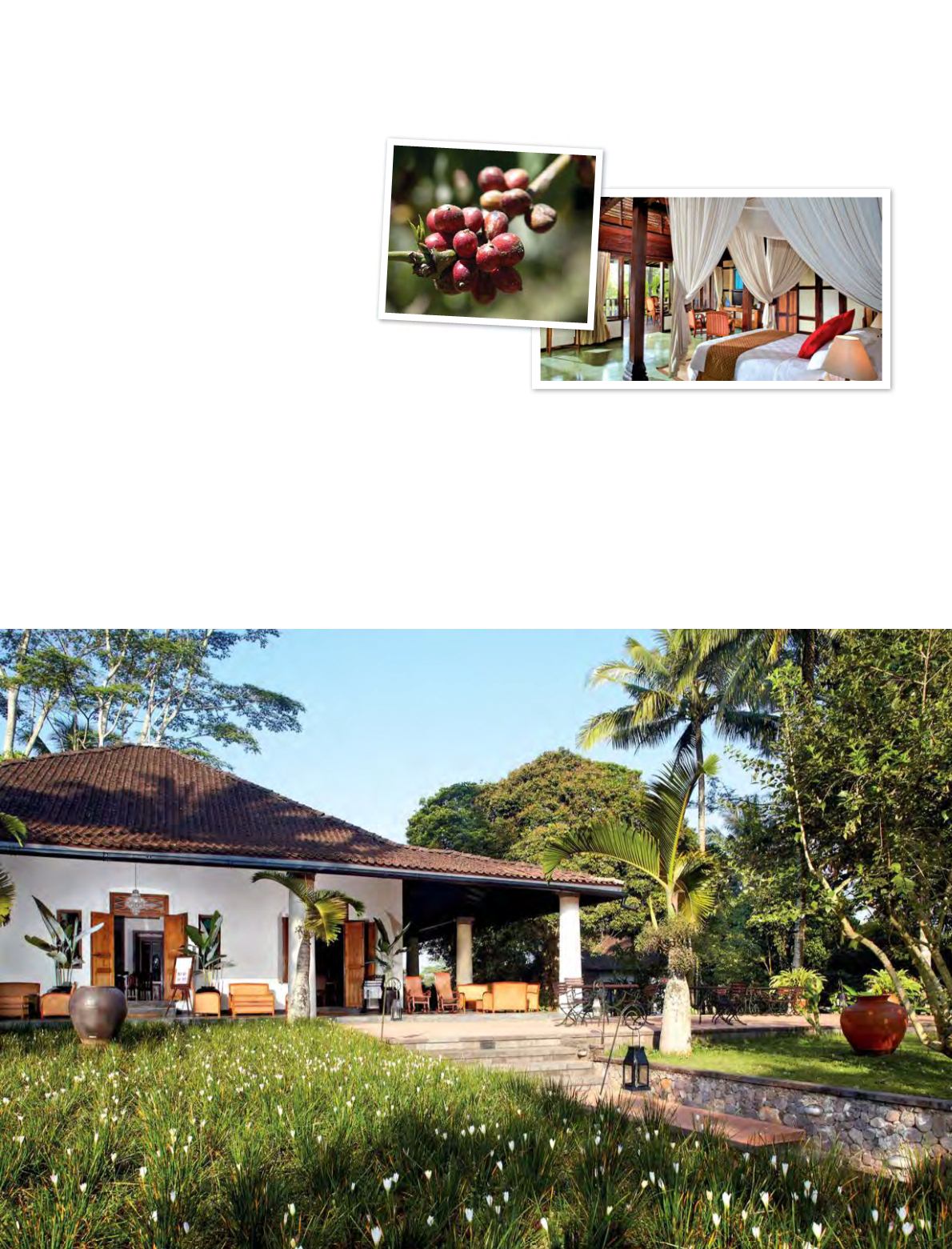

INDONESIA
237
July14
air Javanese-style building with more of
those panoramic views across the valley.
A short initial tour of the grounds also
brought me to the central meeting point
for residents, known as the Club House,
a charming building constructed in 1928
by the Dutchman who first owned the
plantation. (The property has changed
hands a few times over the years; it was
most recently known as Losari Spa
Retreat and Coffee Plantation.)
Now completely restored, the Club
House skilfully blends colonial, Javanese
and contemporary architecture. The
highest point of the retreat, it serves as a
spot for afternoon tea or evening drinks,
where guests can lounge on the verandah
and take in the views, or perhaps sit back
with a book from the library.
The large, on-site coffee plantation
produces up to seven tons of different
varieties of beans per year, providing
jobs and a sustainable source of income
for the community.
The Villas
After a refreshing drink – ginger tea
rather than coffee – I was shown to my
two-storey Ambar Villa.
The open-plan
interior had high ceilings, a double
bedroom featuring a big four-poster
bed with fairytale-like draped hangings,
a spacious lounge, a separate wardrobe
room, and a large two-sink bathroom
with huge stone bath and shower.
Accessible via wooden steps was
another double bedroom upstairs.
Interesting antiques in my villa included
a writing desk, chests and dark wooden
chairs, while the walls were decorated
with traditional artwork.
Guest accommodation at MesaStila
includes 23 of these unique and
traditional heritage villas, transported
from different sites in Indonesia and
reconstructed in original Limasan, Joglo
or Kudus form. Each villa has different
features, too – some are suited to
The Club House



















